Listening to music for insomnia in adults
- PMID: 36000763
- PMCID: PMC9400393
- DOI: 10.1002/14651858.CD010459.pub3
Listening to music for insomnia in adults
Abstract
Background: Insomnia is a common problem in modern society. It is associated with reduced quality of life and impairments in physical and mental health. Listening to music is widely used as a sleep aid, but it remains unclear if it can actually improve insomnia in adults. This Cochrane Review is an update of a review published in 2015.
Objectives: To assess the effects of listening to music on sleep in adults with insomnia and to assess the influence of specific variables that may moderate the effect.
Search methods: For this update, we searched CENTRAL, MEDLINE, Embase, nine other databases and two trials registers up to December 2021. In addition, we handsearched reference lists of included studies, and contacted authors of published studies to identify additional studies eligible for inclusion, including any unpublished or ongoing trials.
Selection criteria: Randomised controlled trials comparing the effects of listening to music with no treatment or treatment as usual (TAU) in adults complaining of sleep difficulties.
Data collection and analysis: Two review authors independently screened records for eligibility, selected studies for inclusion, extracted data and assessed risk of bias of the included studies. We assessed the certainty of the evidence using GRADE. The primary outcomes were sleep quality, insomnia severity, sleep-onset latency, total sleep time, sleep interruption, sleep efficiency and adverse events. Data on the predefined outcome measures were included in meta-analyses when consistently reported by at least two studies that were homogeneous in terms of participants, interventions and outcomes. We undertook meta-analyses using random-effects models.
Main results: We included 13 studies (eight studies new to this update) comprising 1007 participants. The studies examined the effect of listening to prerecorded music daily, for 25 to 60 minutes, for a period of three days to three months. The risk of bias within the studies varied, with all studies being at high risk of performance bias, because of limited possibilities to blind participants to the music intervention. Some studies were at high risk of detection bias or other bias. Four studies reported funding from national research councils, three studies reported financial support from university sources and one study reported a grant from a private foundation. Five studies did not report any financial support. At the end of the intervention, we found moderate-certainty evidence for improved sleep quality measured with the Pittsburgh Sleep Quality Index (PSQI) in themusic groups compared to no intervention or TAU (mean difference (MD) -2.79, 95% confidence interval (CI) -3.86 to -1.72; 10 studies, 708 participants). The PSQI scale ranges from 0 to 21 with higher scores indicating poorer sleep. The size of the effect indicates an increase in sleep quality of the size of about one standard deviation in favour of the intervention. We found no clear evidence of a difference in the effects of listening to music compared to no treatment or TAU on insomnia severity (MD -6.96, 95% CI -15.21 to 1.28; 2 studies, 63 participants; very low-certainty evidence). We found low-certainty evidence that, compared to no treatment or TAU, listening to music may reduce problems with sleep-onset latency (MD -0.60, 95% CI -0.83 to -0.37; 3 studies, 197 participants), total sleep time (MD -0.69, 95% CI -1.16 to -0.23; 3 studies, 197 participants) and sleep efficiency (MD -0.96, 95% CI -1.38 to -0.54; 3 studies, 197 participants), but may have no effect on perceived sleep interruption (MD -0.53, 95% CI -1.47 to 0.40; 3 studies, 197 participants). In addition, three studies (136 participants) included objective measures of sleep-onset latency, total sleep time, sleep efficiency and sleep interruption and showed that listening to music may not improve these outcomes compared to no treatment or TAU. None of the included studies reported any adverse events.
Authors' conclusions: The findings of this review provide evidence that music may be effective for improving subjective sleep quality in adults with symptoms of insomnia. More research is needed to establish the effect of listening to music on other aspects of sleep as well as the daytime consequences of insomnia.
Trial registration: ClinicalTrials.gov NCT02376686 NCT03676491 NCT04157244 NCT04578860 NCT04585425 NCT04633395.
Copyright © 2022 The Cochrane Collaboration. Published by John Wiley & Sons, Ltd.
Conflict of interest statement
KVJ: reports being the primary author of one study included in the reviewa; the study was supported by Trygfonden, Denmark (grant covered equipment and running costs), but the researchers retained complete control over the study design, methods, analysis, interpretation and dissemination of the results; paid to Center for Music in the Brain, Aarhus University.
VPN: reports no known conflicts of interest.
JK: works as a health professional at the University Hospital Cologne, Clinic and Polyclinic for Child and Adolescent Psychiatry, Psychosomatics and Psychotherapy, Cologne Germany, where he leads the specialised outpatient clinic for treatment resistant psychiatric disorders in children and adolescents.
PJ: reports no known conflicts of interest.
PV: reports being a co‐author of a trial that is included in the reviewa; the study was supported by Trygfonden, Denmark (grant covered equipment and running costs), but the researchers retained complete control over the study design, methods, analysis, interpretation and dissemination of the results.
aKVJ and PV are authors on the Jespersen 2019 trial, therefore, two other review authors (VPN and JK), with no involvement in the study, assessed the trial.
Figures
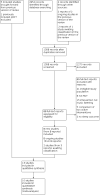
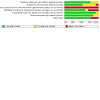
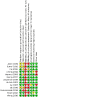
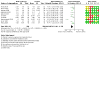
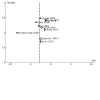

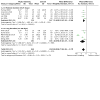
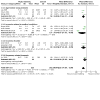
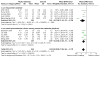
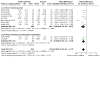
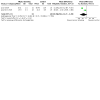

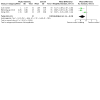

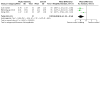
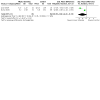
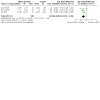
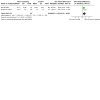
Update of
-
Music for insomnia in adults.Cochrane Database Syst Rev. 2015 Aug 13;2015(8):CD010459. doi: 10.1002/14651858.CD010459.pub2. Cochrane Database Syst Rev. 2015. Update in: Cochrane Database Syst Rev. 2022 Aug 24;8:CD010459. doi: 10.1002/14651858.CD010459.pub3. PMID: 26270746 Free PMC article. Updated.
References
References to studies included in this review
Amiri 2019 {published data only}
-
- Amiri S, Parvizi Fard A, Khaledi-Paveh B, Foroughi A, Bavafa A, Bazani M, et al. The effectiveness of music therapy on insomnia using Persian traditional music. Journal of Kermanshah University of Medical Sciences 2019;23(2):e86914. [DOI: 10.5812/jkums.86914] - DOI
Burrai 2020 {published data only}
Cai 2015 {published data only}
-
- Cai X-M, Zhang X-P, Tang X. Observation on clinical effect of auricular acupoint sticking plus music therapy for post-stroke insomnia. Journal of Acupuncture and Tuina Science 2015;13(4):227-31. [DOI: 10.1007/s11726-015-0858-2] - DOI
Chang 2012 {published data only}
-
- Chang E-T, Lai H-L, Chen P-W, Hsieh Y-M, Lee L-H. The effects of music on the sleep quality of adults with chronic insomnia using evidence from polysomnographic and self-reported analysis: a randomized control trial. International Journal of Nursing Studies 2012;49(8):921-30. [DOI: 10.1016/j.ijnurstu.2012.02.019] [PMID: ] - DOI - PubMed
Harmat 2008 {published and unpublished data}
Huang 2017 {published data only}
Jespersen 2019 {published data only}
-
- NCT02321826. Music for insomnia [Better night – better day: a randomized controlled trial of listening to music for improving insomnia]. clinicaltrials.gov/ct2/show/NCT02321826 (first received 22 December 2014).
Kullich 2003 {published and unpublished data}
-
- Kullich W, Bernatzky G, Hesse HP, Wendtner F, Likar R, Klein G. Music therapy – effect on pain, sleep, and quality of life in low back pain [Musiktherapie – wirkung auf schmerz, schlaf und lebensqualität bei low back pain]. Wiener Medizinische Wochenschrift 2003;153(9-10):217-21. [DOI: 10.1046/j.1563-258x.2003.02081.x] [PMID: ] - DOI - PubMed
Lai 2005 {published data only}
-
- Lai H-L. The Effects of Music Therapy on Sleep Quality in Elderly People [PhD thesis]. Ann Arbor (MI): UMI Dissertation Services, 2004.
Liu 2016 {published data only}
Momennasab 2018 {published data only}
-
- Momennasab M, Ranjbar M, Najafi SS. Comparing the effect of listening to music during hemodialysis and at bedtime on sleep quality of hemodialysis patients: a randomized clinical trial. European Journal of Integrative Medicine 2018;17:86-91. [DOI: 10.1016/j.eujim.2017.12.001] - DOI
Shum 2014 {published data only}
References to studies excluded from this review
Bang 2019 {published data only}
Blanaru 2012 {published data only}
-
- Blanaru M, Bloch B, Vadas L, Arnon Z, Ziv N, Kremer I, et al. The effects of music relaxation and muscle relaxation techniques on sleep quality and emotional measures among individuals with posttraumatic stress disorder. Mental Illness 2012;4(2):59-65. [DOI: 10.4081/mi.2012.e13] [PMCID: PMC4253375] [PMID: ] - DOI - PMC - PubMed
-
- Haimov I, Blanaro M, Arnon Z, Ziv N, Bloch B, Reshef A, et al. P1056 The effects of music and muscle relaxation therapies on sleep quality in individuals with post-traumatic stress disorder. Journal of Sleep Research 2010;19(Suppl 2):364. [URL: onlinelibrary.wiley.com/doi/epdf/10.1111/j.1365-2869.2010.00868.x]
Chan 2010 {published data only}
Chen 2014 {published data only}
Deshmukh 2009 {published data only}
-
- Deshmukh AD, Sarvaiya AA, Seethalakshmi R, Nayak AS. Effect of Indian classical music on quality of sleep in depressed patients: a randomized controlled trial. Nordic Journal of Music Therapy 2009;18(1):70-8. [DOI: 10.1080/08098130802697269] - DOI
Garcia‐Molina 2019 {published data only}
-
- Garcia-Molina G, Patel V, Kalyan B, Tsang K. 0009 Can electroencephalogram-modulated music facilitate falling asleep? Sleep 2019;42(Suppl 1):A402. [DOI: 10.1093/sleep/zsz067.996] - DOI
Hausenblas 2019 {published data only}
-
- Hausenblas H, Hooper S, Hooper D, Coyle K, Lynch T. Efficacy of Wholetones® 2Sleep and classical music on sleep and health behaviors of adults with insomnia symptoms: a single blind, randomized, controlled, crossover pilot trial. Sleep Science 2019;12(4):302-6. [DOI: 10.5935/1984-0063.20190091] [PMCID: PMC7159072] [PMID: ] - DOI - PMC - PubMed
Hérnandez‐Ruíz 2005 {published data only}
Jespersen 2012 {published data only}
-
- Jespersen KV. The Impact of Music on Sleep: a Review and Empirical Study of Music Listening as Intervention for Sleep Improvement [Master thesis]. Aarhus (Denmark): Department of Psychology and Behavioural Sciences, Aarhus University, 2010.
KaradaĞ 2015 {published data only}
-
- KaradaĞ E, Karadakovan A. The effect of music on the sleep quality and vital signs of the chronic renal failure patients who are getting hemodialysis treatment. Turkiye Klinikleri [Journal of Nursing Sciences] 2015;7(2):79-89. [DOI: 10.5336/nurses.2013-34224] - DOI
Kayumov 2003 {published data only}
-
- Kayumov L, Moller HJ. Brain music: a novel somatic treatment for insomnia and anxiety. In: 156th Annual Meeting of the American Psychiatric Association; 2003 May 17-22; San Francisco (CA). 2003:Nr405.
Koenig 2013 {published data only}
-
- Koenig J, Jarczok MN, Warth M, Harmat L, Hesse N, Jespersen KV, et al. Music listening has no positive or negative effects on sleep quality of normal sleepers: results of a randomized controlled trial. Nordic Journal of Music Therapy 2013;22(3):233-42.
Lafçi 2015 {published data only}
-
- Lafçi D, Öztunç G. The effect of music on the sleep quality of breast cancer patients. International Journal of Caring Sciences 2015;8(3):633-40. [URL: internationaljournalofcaringsciences.org/docs/14_Laftci_original_8_3.pdf]
Lai 2012 {published data only}
Lai 2015 {published data only}
Lazic 2007 {published data only}
Lio 2018 {published data only}
-
- Lio Y, Jiang Y, Liu. Influence of Chinese pestle therapy combined with five tone therapy on sleep quality in patients with digestive system malignancy with heart and spleen deficiency. Chinese Nursing Research 2018;32(22):3553-7. [URL: cdutcm.irtree.com/articles/article_detail.aspx?id=b9c53c945fb94130bbec2e...
Lu 2020 {published data only}
-
- Lu Y, Nie Z, Yu C. Effect of paroxetine combined with music relaxation therapy on psychology and sleep state of patients with depression. Chinese Nursing Research 2020;34(20):3625-8. [URL: jglobal.jst.go.jp/en/detail?JGLOBAL_ID=202102266167537868]
Mottaghi 2016 {published data only}
-
- Mottaghi R, Kamkar A, Maredpoor A. Effectiveness of targeted musical therapy on sleep quality and overcoming insomnia in seniors. Salmand [Iranian Journal of Ageing] 2016;11(2):348-57. [URL: doaj.org/article/5728c8a6fb804ce5862af6c60ea276f4]
Oxtoby 2013 {published data only}
-
- Oxtoby J, Sacre S, Lurie-Beck J, Pedersen IN. The impact of relaxing music on insomnia-related thoughts and behaviours. Australian Journal of Music Therapy 2013;24:67-86. [DOI: 10.3316/INFORMIT.878304921746988] - DOI
Qin 2020 {published data only}
-
- Qin Y, Xiaobin Z, Wenxia H, Xie W, Qian M, Yanli L. The application of self-made Chinese medicine pillow combined with five elements music therapy on insomnia due to disharmony between heart and kidney in patients with chronic renal failure. Nursing of Integrated Traditional Chinese and Western Medicine 2020;6(8):112-7. [URL: www.zxyjhhl.com.cn/EN/abstract/abstract7572.shtml]
Shobeiri 2016 {published data only}
-
- Shobeiri F, Khaledi S, Masoumi SZ, Roshanaei G. The effect of music therapy counseling on sleep quality in pregnant women. International Journal of Medical Research & Health Sciences 2016;5(Suppl 9):408-16. [URL: www.ijmrhs.com/medical-research/the-effect-of-music-therapy-counseling-o...]
Sithinamsuwan 2012 {published and unpublished data}
-
- Sithinamsuwan P, Saengwanitch S, Pinidbunjerdkool A, Ukritchon S, Mungthin M. The effect of Thai traditional music on cognitive function, psychological health and quality of sleep among older Thai individuals with dementia. Journal of the American Geriatrics Society 2012;60(Suppl 4):S61. [DOI: 10.1111/j.1532-5415.2012.04000.x] - DOI
Srikolcheep 2017 {published data only}
-
- Srikolcheep N, Sittiprapaporn P. Efficacy of the Integrated Listening Systems' Dreampad™ device to sleep quality in insomnia patient. In: International Conference on Digital Arts, Media and Technology (ICDAMT); 2017 Mar 1-4; Chiang Mai, Thailand. 2017:356-9. [DOI: 10.1109/ICDAMT.2017.7904991] - DOI
Weise 2020 {published data only}
-
- Weise L, Töpfer NF, Deux J, Wilz G. Feasibility and effects of individualized recorded music for people with dementia: a pilot RCT study. Nordic Journal of Music Therapy 2020;29(1):39-56. [DOI: 10.1080/08098131.2019.1661507] - DOI
Yamasato 2020 {published data only}
-
- Yamasato A, Kondo M, Hoshino S, Kikuchi J, Ikeuchi M, Yamazaki K, et al. How prescribed music and preferred music influence sleep quality in university students. Tokai Journal of Experimental and Clinical Medicine 2020;45(4):207-13. [PMID: ] - PubMed
Ziv 2008 {published data only}
References to studies awaiting assessment
Miller 2002 {published and unpublished data}
-
- Miller K, Bernatzky G, Wendtner F. The purpose of music and relaxation for health promotion after surgical procedures – results of a prospective, randomized study. In: O'Dostrovsky J, Carr DB, Koltzenburg M , editors(s). Proceedings of the 10th World Congress on Pain; 2002 Aug 17-22; San Diego (CA). Seattle (WA): International Association for the Study of Pain (IASP) Press, 2003.
Zhu 2018 {published data only}
-
- Zhu Y. 200 Research on effects of personalized music intervention on sleep quality of people. Basic & Clinical Pharmacology & Toxicology 2018;123 (Suppl 3):110. [URL: onlinelibrary.wiley.com/doi/epdf/10.1111/bcpt.13100]
References to ongoing studies
IRCT2015051822141N1 {published data only}IRCT2015051822141N1
-
- IRCT2015051822141N1. Comparison between effect of music and relaxation on sleep [Comparison of the effects of music and muscle relaxation on sleep quality in elderly people referring to the Jahandidegan center in Shiraz 2014-2015]. www.irct.ir/trial/19172 (first received 18 May 2015).
IRCT20150519022320N10 {published data only}IRCT20150519022320N10
-
- IRCT20150519022320N10. The effect of traditional music on sleep quality in elderlies. www.irct.ir/trial/29507 (first received 9 March 2018).
NCT02376686 {published data only}
-
- NCT02376686. Music intervention in the treatment of sleep disorders for depressed patients [Musik als nicht-pharmakologische intervention zur behandlung von schlafstörungen bei patienten mit depressiven erkrankungen]. clinicaltrials.gov/ct2/show/NCT02376686 (first received 3 March 2015).
NCT03676491 {published data only}
-
- NCT03676491. Music to improve sleep quality in adults with depression and insomnia (MUSTAFI) [Music to improve sleep quality in adults with depression and insomnia: a randomised controlled trial using mixed methods]. clinicaltrials.gov/ct2/show/NCT03676491 (first received 18 September 2018).
NCT04157244 {published data only}
-
- NCT04157244. The music, sleep and dementia study [The feasibility of a tailored music intervention to reduce symptoms of sleep disruption in older adults with dementia]. clinicaltrials.gov/ct2/show/NCT04157244 (first received 8 November 2019).
NCT04578860 {published data only}
-
- NCT04578860. Effectiveness of music therapy on sleep disorders [A 3-months, controlled and double-blind trial of the effectiveness of music therapy in the treatment of sleep disorders in general medicine]. clinicaltrials.gov/ct2/show/NCT04578860 (first received 9 October 2020).
NCT04585425 {published data only}
-
- NCT04585425. Music for sleep-onset insomnia [God Nat – God Dag. A randomized controlled trial of bedtime music as early intervention for sleep-onset insomnia]. clinicaltrials.gov/ct2/show/NCT04585425 (first received 14 October 2020).
NCT04633395 {published data only}
-
- NCT04633395. Treating pregnancy related insomnia with music [Treating pregnancy related insomnia with music: a randomised control trial]. clinicaltrials.gov/ct2/show/NCT04633395 (first received 18 November 2020).
Additional references
Aalbers 2017
AASM 2014
-
- American Academy of Sleep Medicine. ICSD3: the International Classification of Sleep Disorders: Diagnostic and Coding Manual. 3rd edition. Rochester (MN): American Academy of Sleep Medicine, 2014. [URL: tinyurl.com/5x8bwxxz]
APA 2013
-
- American Psychiatric Association. Diagnostic and Statistical Manual of Mental Disorders (DSM-5). 5th edition. Arlington (VA): American Psychiatric Association, 2013.
Aritake‐Okada 2009
Baglioni 2011
Bastien 2001
Beck 1996
-
- Beck AT, Steer RA, Brown GK. BDI-II: Beck Depression Inventory. 2nd edition. San Antonio (TX): Psychological Corporation, 1996.
Begg 1994
-
- Begg CB, Mazumdar M. Operating characteristics of a rank correlation test for publication bias. Biometrics 1994;50(4):1088-101. [PMID: ] - PubMed
Bernatzky 2011
Bradt 2013
Bradt 2021
-
- Bradt J, Dileo C, Myers-Coffman K, Biondo J. Music interventions for improving psychological and physical outcomes in people with cancer. Cochrane Database of Systematic Reviews 2021, Issue 10. Art. No: CD006911. [DOI: 10.1002/14651858.CD006911.pub4] [PMCID: PMC8510511 (available on 12 October 2022)] [PMID: ] - DOI - PMC - PubMed
Brattico 2009
Bruscia 1998
-
- Bruscia KE. Defining Music Therapy. 2nd edition. Gilsum (NH): Barcelona Publishers, 1998.
Buysse 1989
Cepeda 2006
Chen 2021
Chung 2015
-
- Chung KF, Yeung WF, Ho FY, Yung KP, Yu YM, Kwok CW. Cross-cultural and comparative epidemiology of insomnia: the Diagnostic and Statistical Manual (DSM), International Classification of Diseases (ICD) and International Classification of Sleep Disorders (ICSD). Sleep Medicine 2015;16(4):477-82. [DOI: 10.1016/j.sleep.2014.10.018] [PMID: ] - DOI - PubMed
Covidence [Computer program]
-
- Covidence. Version accessed 25 January 2022. Melbourne, Australia: Veritas Health Innovation. Available at covidence.org.
Deeks 2021
-
- Deeks JJ, Higgins JP, Altman DG. Chapter 10: Analysing data and undertaking meta-analyses. In: Higgins JP, Thomas J, Chandler J, Cumpston M, Li T, Page MJ, Welch VA, editor(s). Cochrane Handbook for Systematic Reviews of Interventions Version 6.2 (updated February 2021). Cochrane, 2021. Available from training.cochrane.org/handbook/archive/v6.2.
De Niet 2009
-
- De Niet GJ, Tiemens BG, Kloos MW, Hutschemaekers GJ. Review of systematic reviews about the efficacy of non-pharmacological interventions to improve sleep quality in insomnia. International Journal of Evidence-Based Healthcare 2009;7(4):233-42. [DOI: 10.1111/j.1744-1609.2009.00142.x] [PMID: ] - DOI - PubMed
Dickson 2019
Dickson 2020
Dileo 2007
-
- Dileo C, Bradt J. Music therapy: applications to stress management. In: Lehrer PM, Woolfolk RL, Sime WE, editors(s). Principles and Practice of Stress Management. 3rd edition. New York (NY): Guilford Press, 2007:519-44.
Egger 1997
FDA 2022
-
- Food & Drug Administration. Benzodiazepine Drug Information . www.fda.gov/drugs/information-drug-class/benzodiazepine-drug-information (accessed 18 August 2022).
Feng 2018
Frandsen 2014
-
- Frandsen R, Baandrup L, Kjellberg J, Ibsen R, Jennum P. Increased all-cause mortality with psychotropic medication in Parkinson's disease and controls: a national register-based study. Parkinsonism & Related Disorders 2014;20(11):1124-8. [DOI: 10.1016/j.parkreldis.2014.07.012] [PMID: ] - DOI - PubMed
Garza‐Villarreal 2014
Geretsegger 2017
-
- Geretsegger M, Mössler KA, Bieleninik Ł, Chen XJ, Heldal TO, Gold C. Music therapy for people with schizophrenia and schizophrenia-like disorders. Cochrane Database of Systematic Reviews 2017, Issue 5. Art. No: CD004025. [DOI: 10.1002/14651858.CD004025.pub4] [PMCID: PMC6481900] [PMID: ] - DOI - PMC - PubMed
GRADEpro GDT [Computer program]
-
- GRADEpro GDT. Version accessed 17 August 2021. Hamilton (ON): McMaster University (developed by Evidence Prime). Available at gradepro.org.
Guyatt 2011
Hargreaves 1997
-
- Hargreaves DJ, North AC, editor(s). The Social Psychology of Music. Oxford (UK): Oxford University Press, 1997.
Harmat 2014 [pers comm]
-
- Harmat L. RE: page proofs and question [personal communication]. Email to: J Koenig 26 September 2014.
Hernández‐Ruiz 2005
Higgins 2011
-
- Higgins JP, Altman DG, Sterne JA. Chapter 8: Assessing risk of bias in included studies. In: Higgins JP, Green S, editor(s). Cochrane Handbook for Systematic Reviews of Interventions Version 5.1.0 (updated March 2011). The Cochrane Collaboration, 2011. Available from training.cochrane.org/handbook/archive/v5.1/.
Higgins 2021
-
- Higgins JP, Li T, Deeks JJ. Chapter 6: Choosing effect measures and computing estimates of effect. In: Higgins JP, Thomas J, Chandler J, Cumpston M, Li T, Page MJ, Welch VA, editor(s). Cochrane Handbook for Systematic Reviews of Interventions Version 6.2 (updated February 2021). Cochrane, 2021. Available from training.cochrane.org/handbook.
Hodges 2009
-
- Hodges DA. Bodily responses to music. In: Hallam S, Cross I, Thaut M, editors(s). The Oxford Handbook of Music Psychology. Oxford (UK): Oxford University Press, 2009:121-30.
Jennum 2015
Jennum 2018
Jespersen 2012
Juslin 2001
-
- Juslin PN, Sloboda JA. Music and Emotion: Theory and Research. Oxford (UK): Oxford University Press, 2001.
Juslin 2011
-
- Juslin PN, Liljeström S, Laukka P, Västfjäll D, Lundqvist LO. Emotional reactions to music in a nationally representative sample of Swedish adults: prevalence and causal influences. Musicae Scientiae 2011;15(2):174-207. [DOI: 10.1177/1029864911401169] - DOI
Koelsch 2011
Korhan 2011
Kripke 2012
Kryger 2017
-
- Kryger MH, Roth T, Dement WC. Principles and Practice of Sleep Medicine. Philadelphia (PA): Elsevier, 2017. [DOI: 10.1016/C2012-0-03543-0] - DOI
Krystal 2004
-
- Krystal AD. The changing perspective on chronic insomnia management. Journal of Clinical Psychiatry 2004;65(Suppl 8):20-5. [PMID: ] - PubMed
Kullich 2014a [pers comm]
-
- Kullich W. Re: data request / Cochrane Review [personal communication]. Email to: J Koenig 25 September 2014.
Kullich 2014b [pers comm]
-
- Kullich W. Fw: Data Request / Cochrane Review [personal communication]. Email to: J Koenig 15 September 2014.
Latimer Hill 2007
Lefebvre 2021
-
- Lefebvre C, Glanville J, Briscoe S, Littlewood A, Marshall C, Metzendorf M-I, et al. Chapter 4: Searching for and selecting studies. In: Higgins JP, Thomas J, Chandler J, Cumpston M, Li T, Page MJ, Welch VA, editor(s). Cochrane Handbook for Systematic Reviews of Interventions Version 6.2 (updated February 2021). Cochrane, 2021. Available from training.cochrane.org/handbook/archive/v6.2.
Léger 2001
Léger 2008
-
- Léger D, Poursain B, Neubauer D, Uchiyama M. An international survey of sleeping problems in the general population. Current Medical Research and Opinion 2008;24(1):307-17. - PubMed
Magee 2017
Mayer 2011
McKenzie 2021
-
- McKenzie JE, Brennan SE, Ryan RE, Thomson HJ, Johnston RV. Chapter 9: Summarizing study characteristics and preparing for synthesis. In: Higgins JP, Thomas J, Chandler J, Cumpston M, Li T, Page MJ, Welch VA, editor(s). Cochrane Handbook for Systematic Reviews of Interventions Version 6.2 (updated February 2021). Cochrane, 2021. Available from training.cochrane.org/handbook/archive/v6.2.
Morin 2003
Morin 2006
Morin 2013
Nieminen 2012
-
- Nieminen S, Istók E, Brattico E, Tervaniemi M. The development of the aesthetic experience of music: preference, emotions, and beauty. Musicae Scientiae 2012;16(3):372-91. [DOI: 10.1177/1029864912450454] - DOI
NIH 2005
Nilsson 2009
Ohayon 2002
Page 2021
Perlis 2020
-
- Perlis ML, Vargas I, Ellis JG, Grandner MA, Morales KH, Gencarelli A, et al. The natural history of insomnia: the incidence of acute insomnia and subsequent progression to chronic insomnia or recovery in good sleeper subjects. Sleep 2020;43(6):zsz299. [DOI: 10.1093/sleep/zsz299] [PMCID: PMC7294401] [PMID: ] - DOI - PMC - PubMed
Petrovsky 2021
Review Manager Web 2021 [Computer program]
-
- Review Manager Web (RevMan Web). The Cochrane Collaboration, 2021. Available at revman.cochrane.org.
Riedel 2000
Riemann 2017
Scarratt 2021
-
- Scarratt RJ, Heggli OA, Vuust P, Jespersen KV. The music people use to sleep: universal and subgroup characteristics. psyarxiv.com/5mbyv/ (accessed 1 September 2021). [DOI: 10.31234/osf.io/5mbyv] - DOI
Shekleton 2010
Spielberger 1983
-
- Spielberger CD, Gorsuch RL, Lushene R, Vagg PR, Jacobs GA. Manual for the State-Trait Anxiety Inventory. Palo Alto (CA): Consulting Psychologists Press, 1983.
Sterne 2011
Street 2014
Su 2013
-
- Su CP, Lai HL, Chang ET, Yiin LM, Perng SJ, Chen PW. A randomized controlled trial of the effects of listening to non-commercial music on quality of nocturnal sleep and relaxation indices in patients in medical intensive care unit. Journal of Advanced Nursing 2013;69(6):1377-89. [DOI: 10.1111/j.1365-2648.2012.06130.x] [PMID: ] - DOI - PubMed
Taylor 2003
Taylor 2007
Trappe 2010
Urponen 1988
Vuust 2006
Vuust 2010
-
- Vuust P, Gebauer L, Hansen NC, Jørgensen SR, Møller A, Linnet J. Personality influences career choice: sensation seeking in professional musicians. Music Education Research 2010;12(2):219-30. [DOI: 10.1080/14613801003746584] - DOI
Walsh 2004
-
- Walsh JK. Clinical and socioeconomic correlates of insomnia. Journal of Clinical Psychiatry 2004;65(Suppl 8):13-9. [PMID: ] - PubMed
Wang 2014
Ware 1992
-
- Ware JE Jr, Sherbourne CD. The MOS 36-item short-form health survey (SF-36): I. Conceptual framework and item selection. Medical Care 1992;30(6):473-83. [PMID: ] - PubMed
WHO 1992
-
- World Health Organization. ICD-10: International Statistical Classification of Diseases and Related Health Problems Tenth Revision. Vol. 1. Geneva (CH): World Health Organization, 1992.
Wigram 2002
-
- Wigram T, Pedersen IN, Bonde LO. A Comprehensive Guide to Music Therapy: Theory, Clinical Practice, Research and Training. London (UK): Jessica Kingsley Publishers, 2002.
Wilson 2019
-
- Wilson SJ, Anderson K, Baldwin D, Dijk D-K, Epsie A, Espie C, et al. British Association for Psychopharmacology consensus statement on evidence-based treatment of insomnia, parasomnias and circadian rhythm disorders: an update. Journal of Psychopharmacology 2019;33(8):923-47. [DOI: 10.1177/0269881119855343] [PMID: ] - DOI - PubMed
Zhang 2012
Zimmerman 1996
-
- Zimmerman L, Nieveen J, Barnason S, Schmaderer M. The effects of music interventions on postoperative pain and sleep in coronary artery bypass graft (CABG) patients. Scholarly inquiry for nursing practice 1996;10(2):153-70; discussion 171-4. - PubMed
References to other published versions of this review
Jespersen 2013
Publication types
MeSH terms
Associated data
LinkOut - more resources
Full Text Sources
Medical

